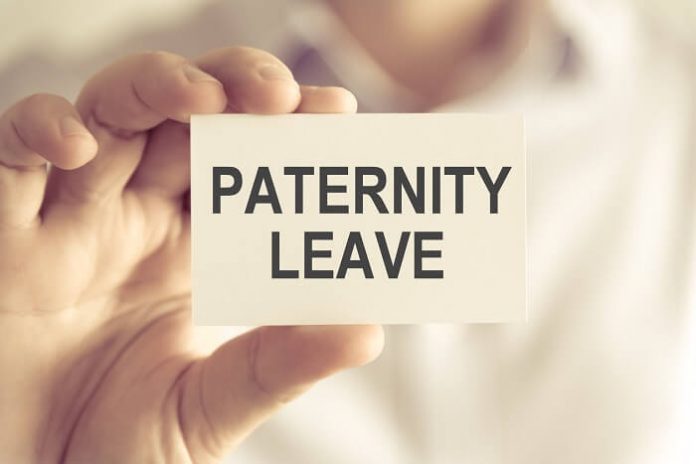This article is written by Manasvee Malviya, a student from the University of Petroleum and Energy Studies, Dehradun. This article discusses the laws relating to parental leave and the need for paternity leave laws in India.
Table of Contents
Introduction
Gender equality at the place of employment is one of the key factors for a person to join the company. For a healthy work environment, employers look after the needs of the employees. The future of the work environment is shifting and has a strong focus on equitable benefits, fair policies, and diversity. The company’s policies promote gender equality by providing various policies, like maternity leave. For promoting gender equality, introducing paternity leave policies will play a significant role. When a child is born, the child needs special care and nurturing from parents. It is obvious the parents have to take time off for doing so. There are laws and policies which provide for maternity leave, but there are no provisions regarding paternity leave. Parental leave is an employee benefit and it includes maternity, paternity, and adoption leave. Paternity leave is a paid leave granted to the father from work to spend time and take care of the newborn child and mother. Both parents have equal rights to spend time with their children.
Indian society has a perception that women are responsible for taking care of the family and men are the bread earners of the family. But the time has changed, men are not the only bread earners of the family as women are contributing equally. Both the parents are earning and it is equally important for both the parents to contribute to child-rearing. This article will address the need for paternity leave signifying the roles of parents in child-rearing.
Role of parents in child development
Parents play a significant role in the child’s development. Parenting is a never-ending job for parents and both mother and father are equally responsible for child development. In every child’s life, home is the primary place of learning. Whatever a child sees at home, he/she adapts and follows the traits of their parents. Hence, parents must be equally active from the moment the child is born. Therefore, only the mother should not be entitled to maternity leave and other benefits, but the father should also be entitled to the paternity leave benefits to bond with the child and to participate equally in child development.
Cognitive development
Positive parenting improves the cognitive, social, and problem-solving skills of a child. Interaction with children at early stages helps them to grow up to be better human beings. Positive parenting affects the responses of a child and learns from how parents interact, deal with all kinds of situations, discipline, and others.
Physical development
Children are led by examples, setting a good example by eating right, exercise and leading a healthy life. Right guidance from parents to foster a good system of exercise and health can achieve ideal physical development.
Mental development
The parenting style adopted by the parents helps the child to learn innovatively and prepares them to accept failures and how to overcome them. Using different parenting techniques like the award-punishment technique governs the responses and helps in mental development.
Laws related to parental leave
Central Civil Services (Leave) Rule, 1972
The Central Civil Services (Leave) Rule applies to the government servants appointed to civil services as well as a post in relation to the affairs of the Union. The following rules provide,
- Rule 43 provides for maternity leave for 135 days to female employees with less than two surviving children and not more than 45 days irrespective of the number of surviving children.
- Rule 43A paternity leave, leave for 15 days to male employees for less than two surviving children. The leave can be taken either during the confinement of his wife or up to 6 months from the date of delivery.
- Rule 43B provides for leave to female employees on the adoption of a child for one year or such time till the child is of one year whichever is earlier.
Maternity Benefit (Amendment) Act, 2017
The Maternity Benefit Act, 1961 was replaced by the Maternity Benefit (Amendment) Act, 2017. The 1961 act protects the employment of women during the maternity period and entitles women with fully paid-up leave to take care of the child. The 2017 amendment enhances the provisions of the 1961 act. The period for maternity leave,
- 26 weeks – for the first two children
- 12 weeks – for children after the birth of the first two children
- 12 weeks – for a mother adopting a child below the age of three months.
Further, in an establishment with 30 women or 50 employees whichever is less, the employer has to provide creche facilities either in the office or in any place within 500 meters. During the working hours working mothers can visit the creche four times. Also, if work from home is possible, the employer must permit women to do so.
Paternity Benefit Bill, 2017
The Paternity Benefit Bill, 2017 was introduced by a member of parliament Rajeev Satav, for the benefit of fathers to newborn babies after the Maternity Benefit (Amendment) Act 2017. The bill prevails over the toxic masculinity in Indian society and emphasises equal parental benefits. The bill recognized the importance of the father’s role in child-rearing. The bill allows the father to bond with the child without compromising his role as the bread earner. The Paternity Bill is applicable irrespective of the employment sector i.e., applicable to Government employees as well as non Government employees including private and unorganised sectors. According to this bill, all workers are entitled to paternity leave of 15 days which can be extended up to 3 months. The Bill aims to divide gender roles and recognizes the need for equal participation of parents in child caring. Further, the bill provides for the creation of a Paternity Benefit Scheme Fund, to fulfill costs related to paternity benefit. The central government, employers, and employees will contribute to the scheme.
Need of paternity leave – breaking stereotype
- Most of the communities and societies follow patriarchy. Men are the bread earner of the family and women are the caregivers in the family. When fathers can’t be there for the child-rearing it is considered to be the mothers’ duty. This reinforces gender roles in society and while growing up, children see this as the norm. The Paternity Bill will break the stereotype of gender roles, it will grant fathers to spend time with newborns and divide the duties of child-rearing.
- It is well established that newborns are benefited from paternal interactions from an early stage to deal with their peers. The father spending time with his child will create a positive atmosphere for both of them and it will help to improve the father-child bond.
- Promotes sharing family responsibilities equally between parents.
- After the birth, the mother faces a lot of challenges emotionally and physically. The father’s presence in the postpartum period will lower the stress level and it will help the mother to deal emotionally and physically.
- Parents equally sharing childcare responsibilities will create a supportive workplace culture and will be recognized as normal in the business environment.
- Making the Paternity Bill, 2017 legally binding as a Maternity Act will create equal grounds for the hiring of women and men.
- Lack of paternity leave burdens the mother with childcare responsibilities and eventually results in quitting jobs. Implementation of such provisions will allow the parents to divide duties and women won’t have to quit their jobs for this particular reason.
Private companies and paternity Leave
The private companies have recognized the need of employees and have administered the needs by adding paternity leave policies to the company’s policies.
Zomato
Zomato addressed one of the core issues, some various societal norms and precedents lead to fewer women leaders in organizations, communities, and nations. Due to the lack of universal paternal policies women face difficulties to lead and balance a healthy family and career. Zomato across the world (operating in 13 countries) has a policy for maternity leave for 26 weeks or will follow the government policies whichever is more. Whereas the company has offered the same benefits for men including surrogacy, adoption, and same-sex partners.
Ikea
A Swedish company implemented the paternal leave policies, where both men and women are entitled to a paid leave and they can avail 6 months of paid leave on the child’s birth. Also, the policy will apply to non-birth, surrogacy, and adoption. Moreover, on the return, mothers are allowed to work half days for 16 weeks.
Amazon
Amazon has unique paternal leave policies. Amazon offers up to 4 weeks of pre-partum leave and up to 10 weeks postpartum leave in the case of birthing parents whereas 6 weeks of leave for non-birthing parents i.e., surrogacy and adoption. Amazon has a ramp-back program that allows the new birth parents to ease back at work according to their time and the option of part-time up to 8 weeks.
Microsoft
Microsoft India introduced a new family caregiver leave policy allowing 4 weeks of paid leave to take care of immediate family members, in case of serious health issues, 6 weeks of paternity leave, and increased maternity leave benefits in case of adoption and surrogacy up to 26 weeks.
Adobe
Adobe has taken progressive steps and implemented parental leave policies. 26 weeks of maternity leave to the birth mother and adopting mother. Whereas, 8 weeks of paternity leave. Besides maternity and paternity leave the company also provides various other benefits to both mother and father like insurance policies, leave for illness arising out of pregnancy, etc.
Johnson & Johnson
Johnson & Johnson India, has realised the role of employees at home as well as at work. The company has taken the initiative to set up the agenda for working parents to be the best at work and home. The new parental policy allows 8 weeks of paid leave to fathers of the new and adoptive child. The leave can be availed within the first year of the child to spend time and bond.
Hewlett Packard (HP)
HP India provides employment benefits to the employer to maintain work-life balance and long-term career at the company. HP provides 26 weeks of parental leave to new parents including the adoption of a child. Also, the company has increased the daycare facilities to children up to the age of 3 years and part-time work options will be given to the new parents till 3 years following the birth/adoption of the child.
A way forward
- The Paternity Bill, 2017 regulates paternity leave in all sectors including private and unorganised sectors. The bill not only provides benefits for birth parents but also includes non-birth parents, surrogacy, and adoption. Hence, the bill must be enacted as independent legislation.
- Introducing paternity leave will be a significant step in overcoming the stereotype that mothers are only responsible for childcare.
- Shifting focus from maternity leave policies to paternal policies will benefit society and paternal policy is what the country needs.
Conclusion
In India, the government has taken revolutionary measures to promote gender equality. The introduction of paternity laws will further the objective of the government and the Constitution of India to promote gender equality. Many private companies have realized the need for paternity leave and understood the role of the father in the child-rearing and supporting a mother during the process. Companies have implemented policies for the benefit of both parents including non-birth parents. Paternity leave eases the pressure from women. It is not the sole duty of the mother to provide childcare but also of the father to take an active part in childcare.
References
- https://www.mondaq.com/india/employee-rights-labour-relations/877518/paternity-benefit-bill
- http://164.100.47.4/billstexts/lsbilltexts/asintroduced/678LS%20AS.pdf
Students of LawSikho courses regularly produce writing assignments and work on practical exercises as a part of their coursework and develop themselves in real-life practical skills.
LawSikho has created a telegram group for exchanging legal knowledge, referrals, and various opportunities. You can click on this link and join:
 Serato DJ Crack 2025Serato DJ PRO Crack
Serato DJ Crack 2025Serato DJ PRO Crack









 Allow notifications
Allow notifications



